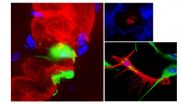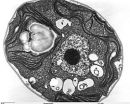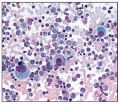New research throws doubt on earlier 'killer walrus' claims
2013-01-17
(Press-News.org) Palaeontologists who examined a new fossil found in southern California have thrown doubt on earlier claims that a "killer walrus" once existed.
Geology PhD student Robert Boessenecker from New Zealand's University of Otago and co-author Morgan Churchill from the University of Wyoming have today published their paper about the fossil in the online scientific journal PLOS ONE.
The paper reports that the new fossil-find, of the extinct walrus Pelagiarctos from southern California, prompts a different hypothesis to an earlier one that a "killer walrus" existed, preying on other marine mammals and/or birds.
Fossils of the walrus were originally found in the 1980s. The large, robust size of the jaw bone, along with the sharp pointed cusps of the teeth similar to modern bone-cracking carnivores like hyenas, suggested that Pelagiarctos fed upon other marine mammals rather than the typical diet of fish as in modern walruses.
However the new fossil, a lower jaw with teeth, and more complete than the original fossil, suggests to the Otago and Wyoming palaeontologists that the Pelagiarctos was more of a fish eater as it lacked adaptations for being a "killer walrus".
The evidence pointed to the tooth shape being unlikely to have been adapted for feeding upon large prey; instead it was an example of primitively retained tooth shape.
"This new find indicates that this enigmatic walrus would have appeared similar in life to modern sea lions, with a deep snout and large canines," says Mr Boessenecker.
The researchers estimated Pelagiarctos to be similar in size to some modern male sea lions (about 350 kg or 770 lbs).
"However, modern pinnipeds (seals, sea lions, and walruses) of small and large body sizes are dietary generalists, and tend to have diets rich in fish – including sea lions similar in body size to Pelagiarctos, which means that its large body size alone doesn't make Pelagiarctos an apex predator."
The new study also analysed the evolutionary relationships of Pelagiarctos for the first time, and found it to be an early sea lion-like walrus that was most closely related to another sea lion-like walrus, Imagotaria downsi, also from California.
###
The study was supported by a University of Otago Doctoral Scholarship, and grants from the Geological Society of America, The Palaeontological Society, and a National Science Foundation EAPSI Fellowship. END
ELSE PRESS RELEASES FROM THIS DATE:
2013-01-17
"Arrests of and Forced Interventions on Pregnant Women in the United States, 1973-2005: Implications for Women's Legal Status and Public Health," an article by Lynn M. Paltrow and Jeanne Flavin in the Journal of Health Politics, Policy and Law (volume 38, issue 2), offers a groundbreaking, in-depth look at criminal and civil cases in which a woman's pregnancy was a deciding factor leading to attempted and actual deprivations of her physical liberty.
As "personhood" measures are promoted and the fortieth anniversary of Roe v. Wade approaches, this article broadens the ...
2013-01-17
When it comes to camouflage, ground-nesting Japanese quail are experts. That's based on new evidence published online on January 17 in Current Biology that mother quail "know" the patterning of their own eggs and choose laying spots to hide them best.
"Not only are the eggs camouflaged, but the birds choose to lay their eggs on a substrate that maximizes camouflage," said P. George Lovell of Abertay University and the University of St Andrews. "Furthermore, the maximization seems specific to individual birds."
Karen Spencer, also of University of St Andrews and a co-author, ...
2013-01-17
Leprosy is a bacterial disease that spreads to muscles and other tissues in the body, causing neurodegeneration and muscle weakness. A new study, published by Cell Press January 17th in the journal Cell, reveals that the bacteria responsible for leprosy spread infection by hijacking specialized cells in the adult nervous system, reprogramming them into a stem cell-like state, and converting them to muscle-like cells. These findings could lead to the development of new therapeutic strategies for combating bacterial infections and degenerative diseases as well as new tools ...
2013-01-17
Scientists at Karolinska Institutet in Sweden have made a large step towards the understanding of how human genes are regulated. In a new study, published in the journal Cell, they identified the DNA sequences that bind to over four hundred proteins that control expression of genes. This knowledge is required for understanding of how differences in genomes of individuals affect their risk to develop disease.
After the human genome was sequenced in 2000, it was hoped that the knowledge of the entire sequence of human DNA could rapidly be translated to medical benefits ...
2013-01-17
Atlanta– Jan. 17, 2013–As of 2009, the overall death rate for cancer in the United States had declined 20 percent from its peak in 1991, translating to the avoidance of approximately 1.2 million deaths from cancer, 152,900 of these in 2009 alone. These figures come from the American Cancer Society's annual Cancer Statistics report, one of the most widely-cited medical publications in the world.
Each year, the American Cancer Society estimates the numbers of new cancer cases and deaths expected in the United States in the current year and compiles the most recent data ...
2013-01-17
Researchers at the University of California, San Diego School of Medicine have identified a molecular mechanism regulating autophagy, a fundamental stress response used by cells to help ensure their survival in adverse conditions.
The findings are published online in the January 17 issue of Cell.
Senior author Kun-Liang Guan, PhD, a professor of pharmacology at UC San Diego Moores Cancer Center, and colleagues report that an enzyme called AMPK, typically involved in sensing and modulating energy use in cells, also regulates autophagic enzymes.
Autophagy, which derives ...
2013-01-17
Researchers at the University of California, San Diego School of Medicine have discovered that hard-to-reach, drug-resistant leukemia stem cells (LSCs) that overexpress multiple pro-survival protein forms are sensitive – and thus vulnerable – to a novel cancer stem cell-targeting drug currently under development.
The findings, published in the January 17 online issue of Cell Stem Cell, open the possibility that diseases like chronic myeloid leukemia (CML) and some solid tumor cancers might – in combination with other therapies – be more effectively treated with this ...
2013-01-17
Scientists have discovered that that the flu virus can essentially tell time, thereby giving scientists the ability to reset the virus' clock and combat it in more effective ways. According to researchers at the Icahn School of Medicine at Mount Sinai, the flu knows how much time it has to multiply, infect other cells, and spread to another human being. If it leaves a cell too soon, the virus is too weak. If it leaves too late, the immune system has time to kill the virus.
The finding provides a novel design platform for the flu vaccine and could lead to new antiviral ...
2013-01-17
New research shows that more than 75 per cent of people with a particular version of a gene don't produce under-arm odour but use deodorant anyway.
The study was based on a sample of 6,495 women who are part of the wider Children of the 90s study at the University of Bristol. The researchers found that about two per cent (117 out of 6,495) of mothers carry a rare version of a particular gene (ABCC11), which means they don't produce any under-arm odour.
While about 5 per cent of people who produce an odour do not use deodorant, more than a fifth (26 out of 117) of ...
2013-01-17
Laparoscopic adjustable gastric banding – lap banding – is a safe and effective long-term strategy for managing obesity, according to the findings of a landmark 15-year follow-up study of patients treated in Australia.
The follow-up study, the longest and most comprehensive yet reported, was published in the Annals of Surgery, and found a significant number of lap band patients maintained an average weight loss of 26 kilograms for more than a decade after their procedure.
Professor Paul O'Brien and colleagues from the Centre for Obesity Research and Education (CORE) ...
LAST 30 PRESS RELEASES:
[Press-News.org] New research throws doubt on earlier 'killer walrus' claims




